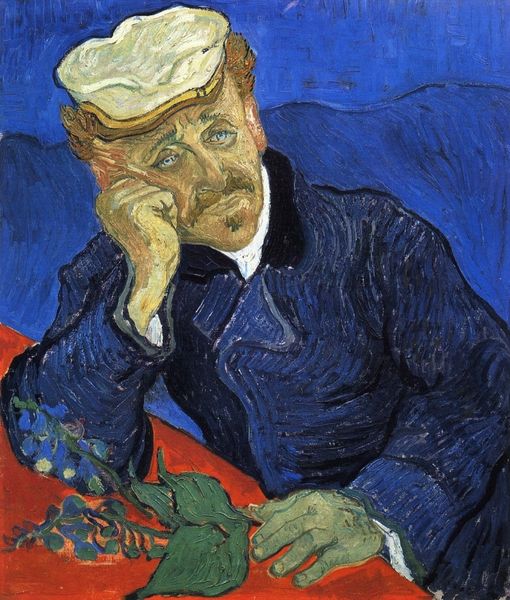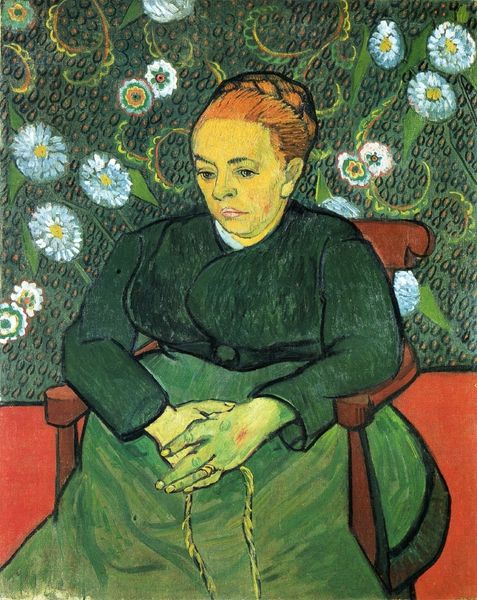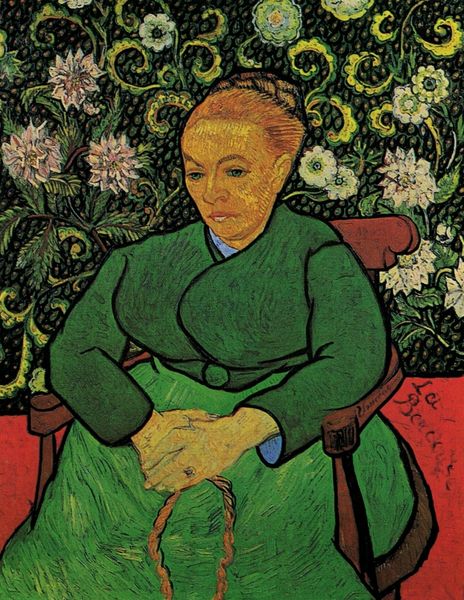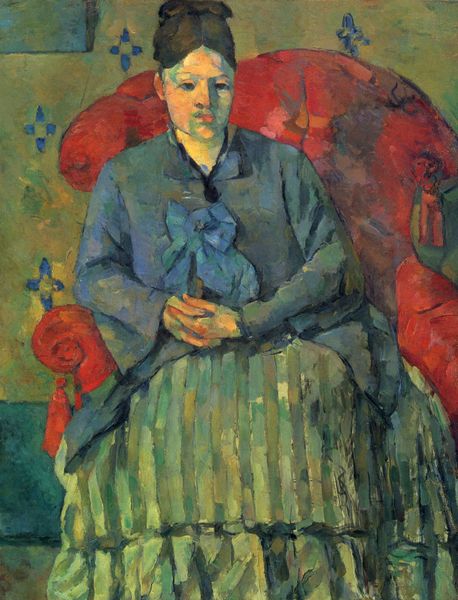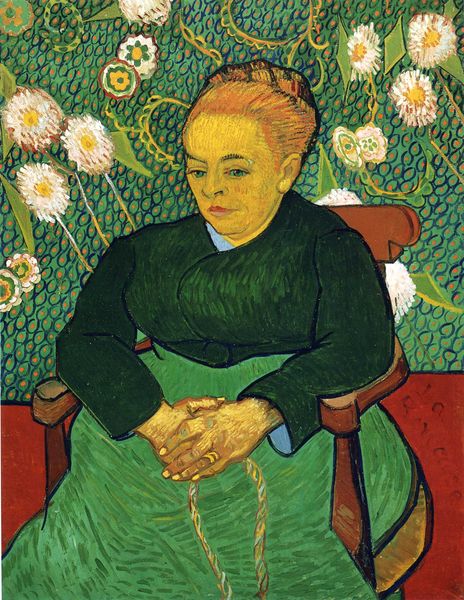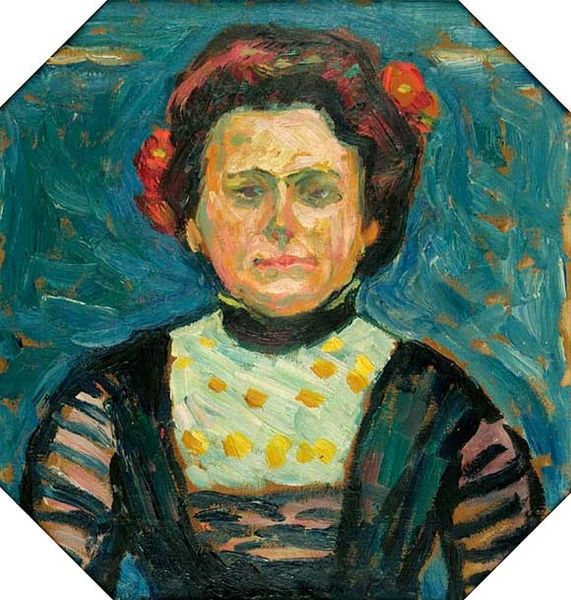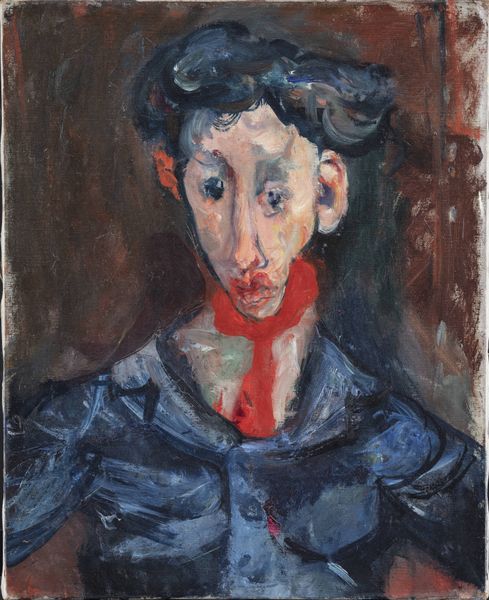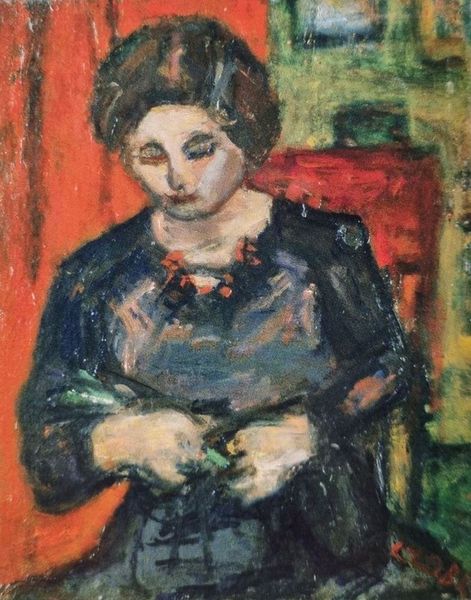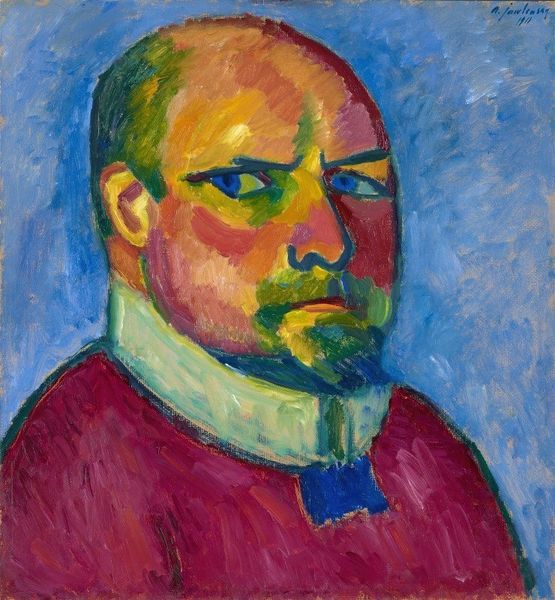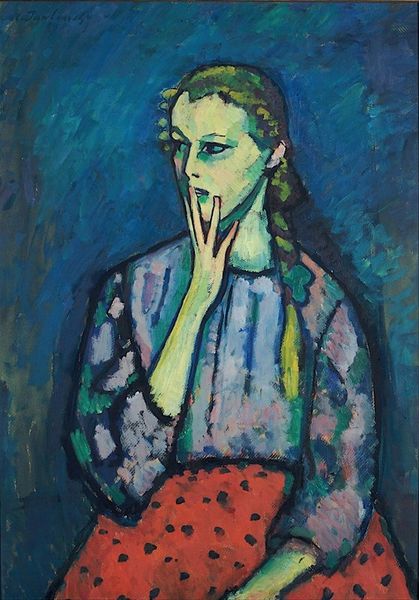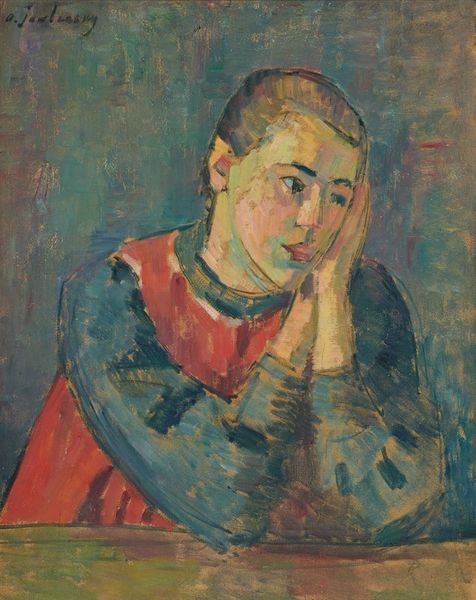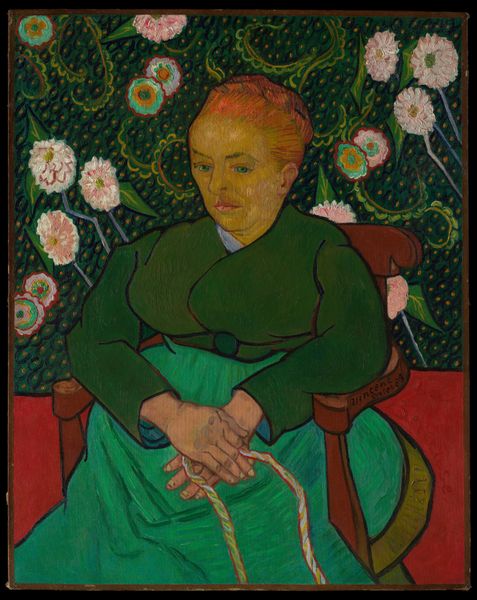
painting, oil-paint
#
portrait
#
painting
#
canvas painting
#
oil-paint
#
german-expressionism
#
oil painting
#
expressionism
#
portrait art
#
expressionist
Copyright: Public domain
Curator: Jawlensky's "Bretonische Bäuerin," painted around 1905, confronts us with striking directness. What’s your immediate reaction? Editor: The palette! It’s jarring. The yellowed flesh against that blazing red backdrop creates a mood that's both unsettling and compelling. There's a real sense of tension here, as though the artist is wrestling with something just below the surface. Curator: I see it too. Jawlensky’s Expressionist approach uses colour and form to convey inner experience. Note how her gaze is both penetrating and weary. Editor: Absolutely. Look at the social context: early 20th century, shifts in rural economies pushing peasant women into increasingly precarious positions. That penetrating gaze reads to me as a complex mix of resilience and the burden of labor. Curator: And consider the cultural memory embedded in the image of the peasant woman, the eternal "mother" figure, deeply rooted in folk traditions, but here, imbued with an almost iconographic intensity through those powerful, simplified forms. Editor: Yet, those traditions were often romanticized or exploited, particularly through the male gaze. I wonder if the "jarring" aesthetic—that very un-romantic palette you mention—is subverting this tradition? Is the painting making us uneasy precisely because it doesn't let us off the hook with pretty stereotypes? Curator: It certainly avoids sentimentality. The bright red, the heavy black cloak, these elements intensify our focus on her face, making it a psychological landscape. It’s not a likeness so much as a raw emotional map, if you will. Editor: That map leads straight to uncomfortable truths about class and gender, rendered with that bold, expressive brushwork—so distinctive of German Expressionism. Jawlensky’s radical honesty leaves an impression long after viewing the piece. Curator: It does. It strips away artifice to reveal the essence of a personhood struggling against powerful forces. A face imprinted not only on canvas, but also on our consciousness. Editor: It is as though that "Bäuerin", and that era, whispers questions of power, resilience, and visibility that echo into the present day. A stark painting; stark reality.
Comments
No comments
Be the first to comment and join the conversation on the ultimate creative platform.
